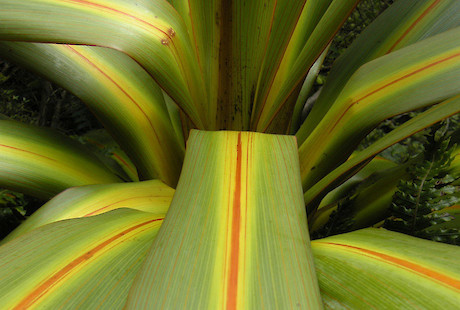 Toi or mountain cabbage tree (Cordyline indivisa). Photo: John SawyerThe flowering plants (angiosperms) are dominated by by two evolutionary groups. These are the monocotyledons and the dicotyledons and are distinguished by the number of embryonic seed leaves (cotyledons), the arrangement of vascular tissue in the stem, leaf venation, and manner of leaf attachment to the stem.
Toi or mountain cabbage tree (Cordyline indivisa). Photo: John SawyerThe flowering plants (angiosperms) are dominated by by two evolutionary groups. These are the monocotyledons and the dicotyledons and are distinguished by the number of embryonic seed leaves (cotyledons), the arrangement of vascular tissue in the stem, leaf venation, and manner of leaf attachment to the stem.
It is estimated that there are between 50,000 and 60,000 monocotyledonous species (monocots) in the world. Monocots make up the majority of species used in agricultural making it the most economically important plant group. Monocots include grasses (Poaceae) such as the true grains rice, wheat and maize, the pasture grasses and sugar cane. Orchids (Orchidaceae) are also monocots and the largest plant family with approximately 20,000 species worldwide.
Monocotyledonous plants exhibit a number of characteristics although there are exceptions to these:
- One embryo leaf or cotyledon
- Adventitious root system - not single dominant root
- Leaves with parallel venation
- Usually no secondary growth in stems
- Whorls in flowers made up of three parts
Monocotyledonous plant groups in New Zealand include:
For more information see:
- New Zealand Native orchids (website)
- Poaceae (Wikipedia)
